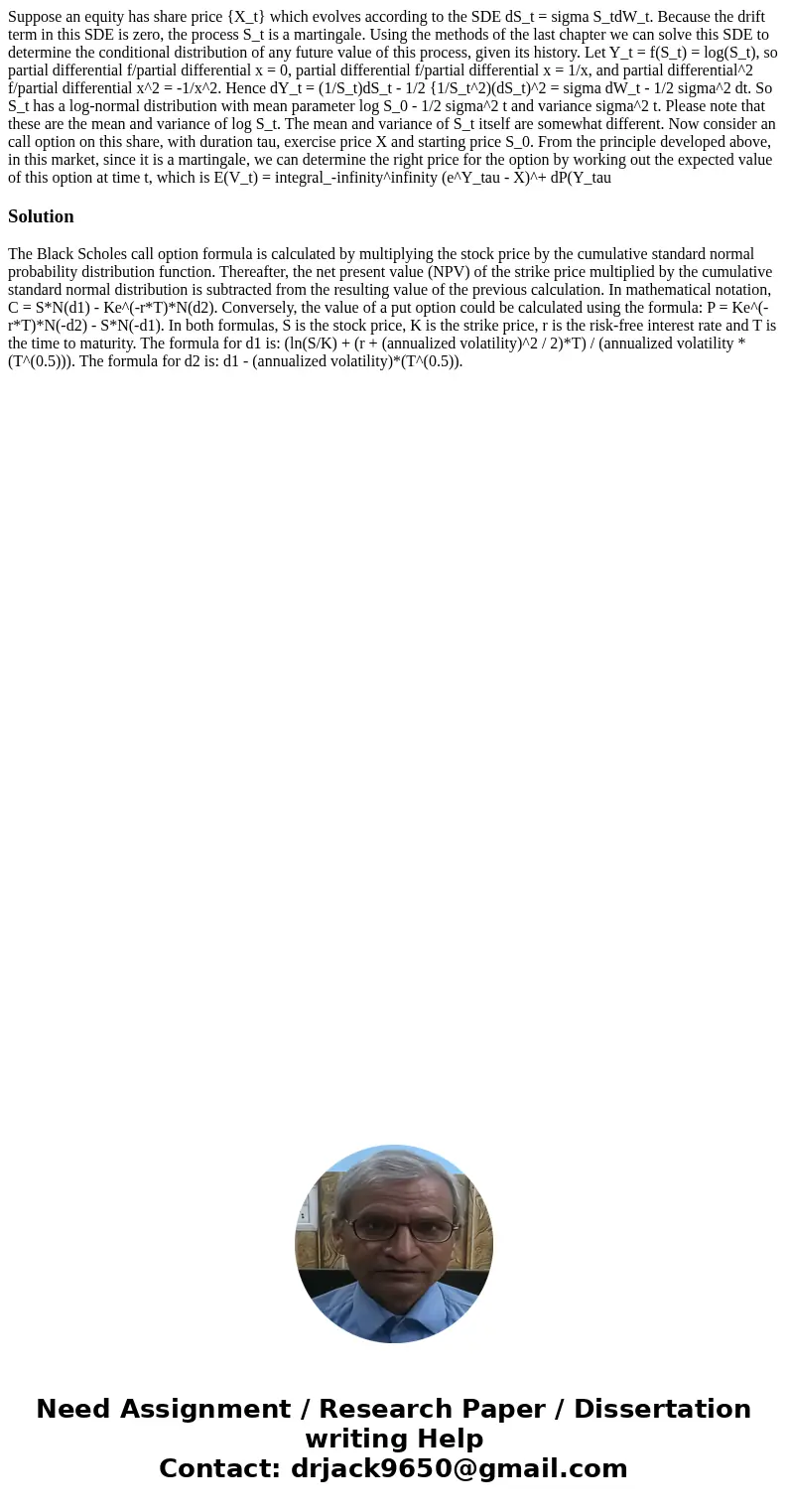Suppose an equity has share price {X_t} which evolves according to the SDE dS_t = sigma S_tdW_t. Because the drift term in this SDE is zero, the process S_t is a martingale. Using the methods of the last chapter we can solve this SDE to determine the conditional distribution of any future value of this process, given its history. Let Y_t = f(S_t) = log(S_t), so partial differential f/partial differential x = 0, partial differential f/partial differential x = 1/x, and partial differential^2 f/partial differential x^2 = -1/x^2. Hence dY_t = (1/S_t)dS_t - 1/2 {1/S_t^2)(dS_t)^2 = sigma dW_t - 1/2 sigma^2 dt. So S_t has a log-normal distribution with mean parameter log S_0 - 1/2 sigma^2 t and variance sigma^2 t. Please note that these are the mean and variance of log S_t. The mean and variance of S_t itself are somewhat different. Now consider an call option on this share, with duration tau, exercise price X and starting price S_0. From the principle developed above, in this market, since it is a martingale, we can determine the right price for the option by working out the expected value of this option at time t, which is E(V_t) = integral_-infinity^infinity (e^Y_tau - X)^+ dP(Y_tau
The Black Scholes call option formula is calculated by multiplying the stock price by the cumulative standard normal probability distribution function. Thereafter, the net present value (NPV) of the strike price multiplied by the cumulative standard normal distribution is subtracted from the resulting value of the previous calculation. In mathematical notation, C = S*N(d1) - Ke^(-r*T)*N(d2). Conversely, the value of a put option could be calculated using the formula: P = Ke^(-r*T)*N(-d2) - S*N(-d1). In both formulas, S is the stock price, K is the strike price, r is the risk-free interest rate and T is the time to maturity. The formula for d1 is: (ln(S/K) + (r + (annualized volatility)^2 / 2)*T) / (annualized volatility * (T^(0.5))). The formula for d2 is: d1 - (annualized volatility)*(T^(0.5)).

 Homework Sourse
Homework Sourse